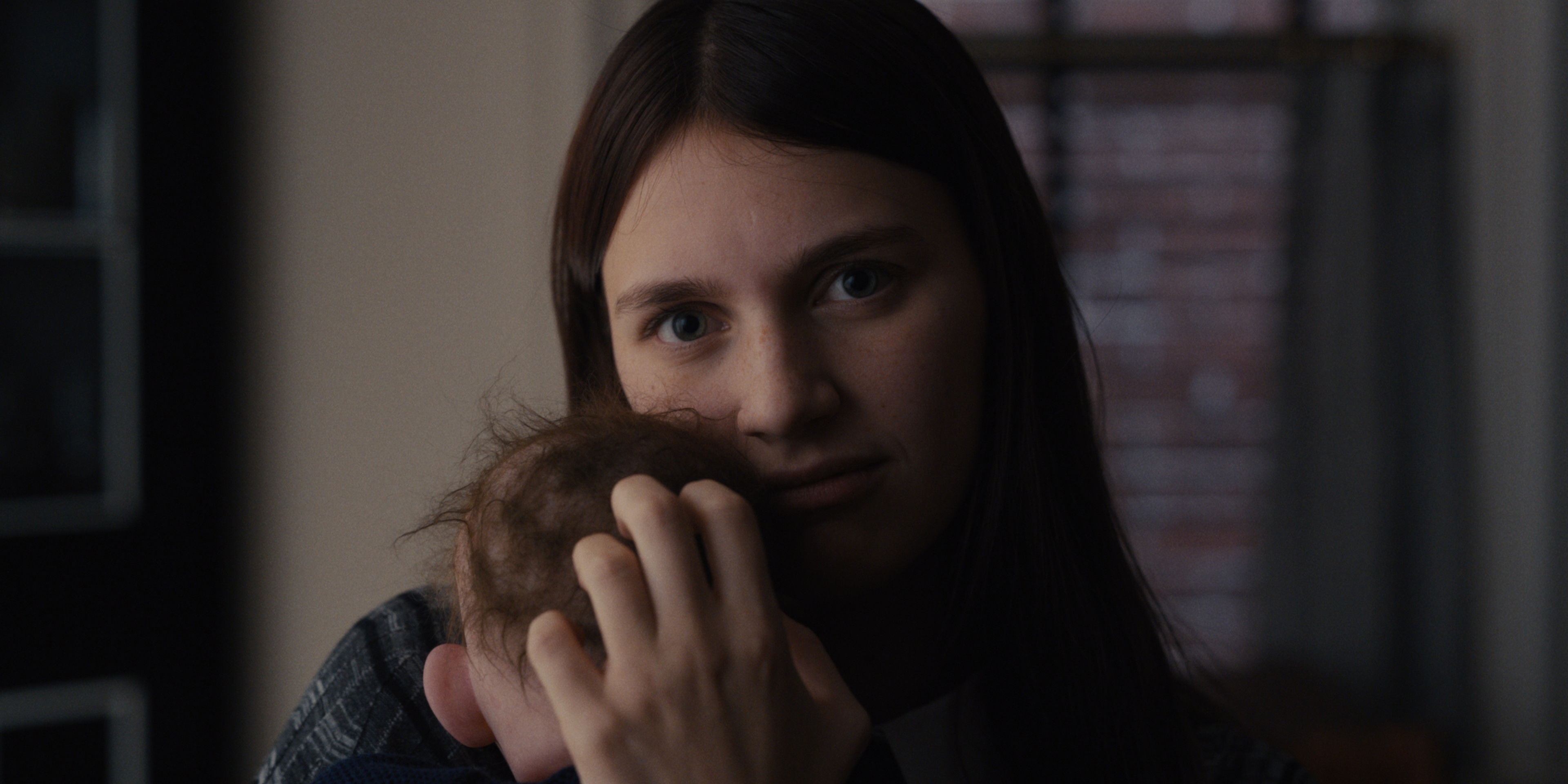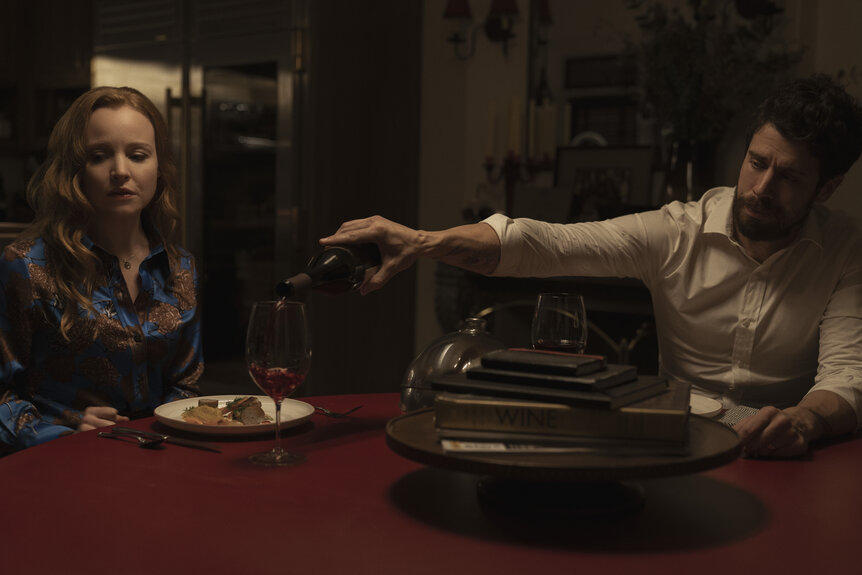Create a free profile to get unlimited access to exclusive videos, sweepstakes, and more!
The mysteries on the set of Servant, Apple TV's new Shyamalan-produced creep show

For a show set in Philadelphia, the birthplace of American democracy, Apple TV+'s new supernatural drama Servant has something of an extremely British premise and air to it. A well-to-do couple have just gone through a catastrophic and mysterious trauma, and instead of telling loved ones and seeking professional help, they hide the truth, self-medicate, hire a nanny, shroud themselves in shame, and quietly panic as ghosts (metaphorical and possibly supernatural) begin to seep into their old rowhouse.
In fact, Servant is a perfect synthesis of its two most prominent creative executives: British writer Tony Basgallop, who began his career on the soap opera EastEnders and later moved on to thrillers, who created and wrote the show; and M. Night Shyamalan, the Philly supernatural virtuoso who executive-produced and directed several episodes.
The 10-episode first season focuses in tight on Dorothy (Lauren Ambrose) and Sean Turner (Toby Kebbell), a wealthy couple mourning the devastating loss of their infant son Jericho, who died at 13 weeks. Dorothy went catatonic when the baby passed, and the only thing that brought her back to the world of the waking was the introduction of a disturbingly lifelike doll made in its image. The first episode opens on the arrival of Leanne (Nell Tiger Free), a quiet 18-year-old girl from Wisconsin who they've hired to serve as a "nanny" for the doll, which Dorothy treats as if it's her living, breathing son — much to Sean's increasing discomfort.
Basgallop, who wrote two episodes of the show before pitching the idea to Shyamalan, found the idea at the end of a harrowing hypothetical scenario he was conjuring up in his head.
"It came from essentially being a parent, having kids and the fear of doing something wrong, and the fear of being put in that position of responsibility when you're not ready for it," he tells SYFY WIRE. "I think the dark imagination just leads you towards 'Well, what could go wrong? What is the worst-case scenario in this? And how would I cope?'"
Parental paranoia is universal, but other elements, Basgallop says, definitely come from his gloomy island home.
"It was as a parent going through those stages of hiring a nanny, and wondering what it feels like and what it means to invite someone into your home and do you trust them, and how do they observe you?" he explains. "Do they judge you for the way you live your life? All these kinds of British sensibilities that I have, wiring back what other people think of me. It's like Mary Poppins, but it's the dark side of Mary Poppins. It's the reverse. It's, well, what if she's not here to help? What if she's here to do harm?"
From the beginning, it's clear that there's something off about Leanne. She's quiet, which isn't necessarily strange for an 18-year-old small-town girl who just moved to the city, but her devotion to the doll — she also treats it with the tenderness reserved by healthy people for a real human, scoffing at any suggestion otherwise — and her still, expressionless mien leave Sean and the viewer at home uncomfortable. Fortunately, Free says the doll — colloquially known as "reborn dolls," they've been a subject of fascination for Basgallop for a number of years — also left her feeling unsettled on set.
"The doll is terrifying, and you don't really ever get used to it. It's so lifelike when you look at it, people thought we animated it, but no, it's real," she says. "And you're always second-guessing it when you see it, and it sneaks up on you. It's heavy, so you actually really want to support its head."
Season 1 of the just-renewed series is a slow burn (though not that slow, thanks to 30-minute episodes) that launches viewers into detective mode at the end of the first episode. It's at that point that the baby doll is suddenly replaced by a real child — and how it happens is entirely unclear. Did Leanne kidnap another child, as Sean initially suspects? Is there something more mystical involved? Were Sean and Dorothy's brother Julian (Rupert Grint) the crazy ones for not seeing the doll as real in the first place?
Leanne's unusual compassion for the doll as well as her cold stare, religious piety, and steady supply of straw crosses point to some kind of connection to the odd developments and grow increasingly suspicious as discrepancies about her past begin to emerge. Still, the young nanny seems more vulnerable than demonic or evil, as if even she has lingering doubts about her background and larger purpose. At least some of that came from a sense of mystery on set as well.
"We absolutely had questions, and I don't think every question that we had, nor the audience has, will be answered in Season 1, and they might not ever really truly get answered," Free says. "I think the crux of the show is not knowing, and being desperate to find out, and it's this morbid curiosity I think that the viewers will experience. 'What is this dark thing that really happened, and who is this dark person?' We all kept trying to ask [Tony]."
There's some disagreement over how many episodes the regular cast was given from the jump — Free says eight, Bagsallop insists nine — but Grint, for his part, was glad to receive limited information.
"I got three at a time, and I didn't want to know everything, I wanted to know just what the character knew," the actor says. "It's so tempting to ask questions and to want to know, but he kept that from us until the very last moment. We didn't get nine and 10 until a few days before we shot it. We had no true idea of exactly how the arc was going to go in its entirety, but that mystery, it was helpful to have, I think."
Kebbell and Ambrose were less concerned with the mystery — though that was certainly compelling — than enveloping themselves in their characters' grief and the very different ways it manifests for each of them.
Ambrose, who spent years steeped in grieving narratives on HBO's Six Feet Under, plays Dorothy as a large personality — she's a local TV news reporter, always at a kooky new location — who is in deep, psychotic denial over her son's death. The outsized, almost manic glee that she projects once Leanne comes to live with them is so artificially inflated that the smallest pinprick could deflate her and send her spiraling.
Sean dove back into his work after the initial tragedy, but as a consulting chef and recipe developer, he works from home, leaving him in the big, gloomy rowhouse with his inanimate facsimile of a son and then the creepy, pious, doe-eyed nanny. He has his own way of coping with the murky details of his baby's death, generally in the kitchen.
"There's a reason Sean's reincarnating old dead recipes, kind of dull, no one's eating Cranachan and haggis or rabbit three-way," Kebbell says, laughing. "These are kind of void recipes. He was trying to invigorate and reinvigorate. Night said that's what he can control. The house is his safety net."
The house set, which Ambrose describes as "a meticulously restored historic brownstone from Philly, recreated on a soundstage where it rains in the building," also became something of a refuge for Kebbell, who used its amenities to further explore Sean's world.
"Between takes, you'd find me in the cellar. I'm not back in my green room, I'm not back in my room on my trailer. I'm in the cellar, sitting reading books," he adds. "I had a bunch of wine books down there, a bunch of cookery books down there, writing and s**t. Trying to figure out how Sean would have dealt with moments of peace, because moments of peace are sometimes terror."
There will be at least another year's worth of creepy quiet thinking time, as Apple renewed Servant for a second season earlier this week. Basgallop says he has ideas mapped out that would take Leanne to 24 years old, or roughly six seasons. That alone should indicate that she is as much a protagonist as anyone else in the story — whether that's a good or bad thing for the rest of the world remains a mystery.



























